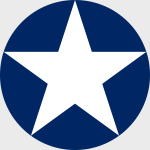Hobby Master HA0212 USN Douglas SBD-2 Dauntless Dive-Bomber - Richard Fleming and Eugene Card, VMSB-241 "Sons of Satan", Midway, June 4th, 1942 (1:32 Scale)
"This nation will remain a neutral nation, but I cannot ask that every American remain neutral in thought as well. Even a neutral has a right to take account of facts, even a neutral cannot be asked to close his mind or close his conscience. I have said not once but many times that I have seen war and that I hate war; I say that again and again. I hope the United States will keep out of this war, I believe that it will. And I give you assurance and reassurance that every effort of your government will be directed toward that end. As long as it remains within my power to prevent there will be no blackout of peace in the United States."
- President Franklin Delano Roosevelt, September 5th, 1939
 The Dauntless was the standard shipborne dive-bomber of the US Navy from mid-1940 until November 1943, when the first Curtiss Helldivers arrived to replace it. Between 1942-43, the Dauntless was pressed into service again and again, seeing action in the Battle of the Coral Sea and the Guadalcanal campaign. It was, however, at the Battle of Midway, that the Dauntless came into its own, singlehandedly destroying four of the Imperial Japanese Navy's frontline carriers. The SBD (referred to, rather affectionately by her aircrews, as "Slow But Deadly") was gradually phased out during 1944. The June 20th, 1944 strike against the Japanese Mobile Fleet, known as the Battle of the Philippine Sea, was the last major engagement in which it was used. From 1942 to 1944, the SBD was also used by several land-based Marine Corps squadrons.
The Dauntless was the standard shipborne dive-bomber of the US Navy from mid-1940 until November 1943, when the first Curtiss Helldivers arrived to replace it. Between 1942-43, the Dauntless was pressed into service again and again, seeing action in the Battle of the Coral Sea and the Guadalcanal campaign. It was, however, at the Battle of Midway, that the Dauntless came into its own, singlehandedly destroying four of the Imperial Japanese Navy's frontline carriers. The SBD (referred to, rather affectionately by her aircrews, as "Slow But Deadly") was gradually phased out during 1944. The June 20th, 1944 strike against the Japanese Mobile Fleet, known as the Battle of the Philippine Sea, was the last major engagement in which it was used. From 1942 to 1944, the SBD was also used by several land-based Marine Corps squadrons.
Built as a two-seat, low-wing Navy scout bomber, the Dauntless was powered by a single Wright R1820 1200-horsepower engine. It became the mainstay of the Navy's air fleet in the Pacific, suffering the lowest loss ratio of any U.S. carrier-borne aircraft. A total of 5,936 SBDs were delivered to the Navy and Marine Corps between 1940 and the end of its production, in July 1944.
This particular 1:32 scale replica of a USN Douglas SBD-2 Dauntless dive-bomber that was piloted by Richard Fleming and Eugene Card, and attached to VMSB-241 on June 4th, 1942.
Sold Out!
Dimensions:
Wingspan: 15-3/4-inches
Length: 12-1/2-inches
Release Date: January 2023
Historical Account: "Mikuma" - Captain Richard Eugene Fleming (November 2nd, 1917 - June 5th, 1942) was a United States Marine who received the Medal of Honor for his heroism in World War II during the Battle of Midway. Fleming piloted a Vought SB2U Vindicator dive bomber in an attack on the Japanese cruiser Mikuma.
Captain Fleming's first duty station was the Naval Air Base in San Diego, California. Ten days after the United States entered World War II, he flew from Pearl Harbor to Midway Island. He fought in the Battle of Midway as Flight Officer of Marine Scout Bombing Squadron 241. When squadron commander Lofton Henderson was shot down during the initial attack on a Japanese aircraft carrier, Fleming took command of the unit. The following day, June 5th, 1942, Capt. Fleming led the second division of his squadron in a mass dive-bombing assault on the Mikuma. Leaving the remainder of his formation, he dived to the perilously low altitude of 400 ft (120 m), exposing himself to enemy fire in order to score a hit on the ship. Undeterred by a fateful approach glide, during which his plane was struck and set afire, he grimly pressed home his attack to an altitude of five hundred feet, released his bomb to score a near-miss on the stern of his target, then crashed to the sea in flames.
For "extraordinary heroism and conspicuous gallantry above and beyond the call of duty," Capt. Fleming was posthumously awarded the nation's highest military decoration - the Medal of Honor, while Pfc. Toms received the Distinguished Flying Cross. On November 24th, 1942, President Franklin Roosevelt presented the Medal of Honor to Capt. Fleming's mother.








![USAF Boeing F-15E Strike Eagle Multi-Role Fighter - 90-0261, 17th Weapons Squadron, Nellis AFB, Nevada, 2021 [Low-Vis Scheme] (1:72 Scale)](http://cdn4.volusion.store/qh9e9-jdqv9/v/vspfiles/photos/HA4541-1.jpg?v-cache=1740197136)
